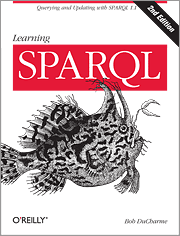“Why don’t libraries get better the more they are used?”
From the post:
On June 19-20, 2013, the 8th Handheld Librarian Online Conference will take place, an online conference about encouraging innovation inside libraries.
Register now, as an individual, group or site, and receive access to all interactive, live online events and recordings of the sessions!
(…)
The keynote presentation is delivered by Michael Edson, Smithsonian Institution’s Director of Web and New Media Strategy, and is entitled “Faking the Internet”. His central question:
“Why don’t libraries get better the more they are used? Not just a little better—exponentially better, like the Internet. They could, and, in a society facing colossal challenges, they must, but we won’t get there without confronting a few taboos about what a library is, who it’s for, and who’s in charge.”
I will register for this conference.
Mostly to hear Michael Edson’s claim that the Internet has gotten “exponentially better.”
In my experience (yours?), the Internet has gotten exponentially noisier.
If you don’t believe me, write down a question (not the query) and give it to ten (10) random people outside your IT department or library.
Have them print out the first page of search results.
Enough proof?
Edson’s point that information resources should improve with use, on the other hand, is a good one.
For example, contrast your local librarian with a digital resource.
The more questions your librarian fields, the better they become with related information and resources on any subject.
A digital resource which no matter how many times it is queried, the result it returns will always be the same.
A librarian is a dynamic accumulator of information and relationships between information. A digital resource is a static reporter of information.
Unlike librarians, digital resources aren’t designed to accumulate new information or relationships between information from users at the point of interest. (A blog response several screen scrolls away is unseen and unhelpful.)
What we need are UIs for digital resources that enable users to map into those digital resources their insights, relationships and links to other resources.
In their own words.
That type of digital resource could become “exponentially better.”

